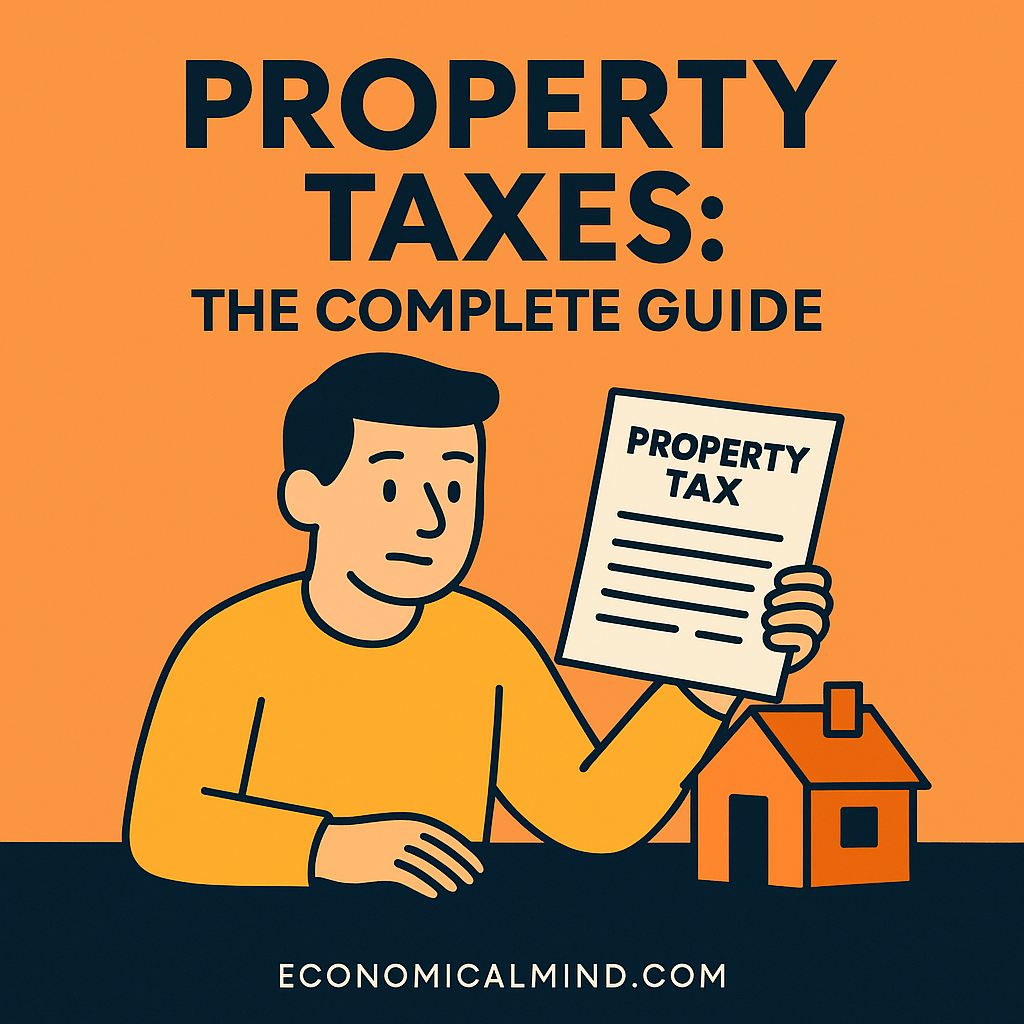
Property taxes are one of the most consistent costs of homeownership — and one of the most misunderstood. Knowing how they work, how they’re calculated, and how to potentially lower them can save you thousands over the years.
What Are Property Taxes?
Property taxes are annual fees homeowners pay to local governments to fund community services like schools, roads, and emergency services. The amount you owe depends on the assessed value of your property and your local tax rate.
Example:
If your home is valued at $300,000 and your local tax rate is 1.2%, your annual property tax would be $3,600.
Property taxes are typically paid through your mortgage escrow account or directly to your county or city treasurer.
How Property Taxes Are Calculated
- Property Assessment – A local assessor determines your home’s market value, usually every one to three years.
- Tax Rate (Mill Rate) – Local governments set a rate based on budget needs.
- Calculation:
Assessed Value × Tax Rate = Annual Property Tax
Example:
A $400,000 home with a 1.5% rate owes $6,000 in annual property taxes.
Pros of Paying Property Taxes
1. Supports Local Communities
Property taxes fund essential public services like schools, parks, and infrastructure.
2. Deductible for Some Taxpayers
Homeowners who itemize deductions may deduct property taxes on federal returns (subject to SALT limits).
3. Reflects Property Value
Higher property taxes often indicate thriving, well-maintained communities with strong amenities.
4. Provides Predictable Costs
Unlike rent, property taxes are relatively stable year to year, with gradual adjustments.
5. Encourages Responsible Ownership
Taxes help maintain community resources that directly benefit homeowners.
Cons of Property Taxes
1. Can Increase Over Time
As home values rise, so can your tax bill.
Fix: Review annual assessments and appeal if your value seems overstated.
2. Varies by Location
Property tax rates differ widely between counties and states.
Fix: Research local rates before buying.
3. Adds to Monthly Costs
Taxes often increase total housing expenses significantly.
Fix: Factor property taxes into your affordability calculations.
4. Complicated Assessment Processes
Inaccurate assessments can lead to overpayment.
Fix: Request a reassessment if comparable homes are valued lower.
5. Not Always Linked to Income
Property taxes don’t adjust based on earnings, making them burdensome for retirees or low-income owners.
Fix: Check for local senior or hardship exemptions.
Best Practices for Managing Property Taxes
1. Understand Your Local Tax Rate
Contact your county assessor’s office or check their website for current rates.
2. Review Your Assessment Notice
When you receive your annual valuation, confirm that property details (square footage, improvements, etc.) are accurate.
3. File an Appeal if Needed
If your home’s assessed value seems too high, you can appeal within a set window — often 30 to 90 days.
4. Keep Records of Improvements
Major upgrades can increase assessed value; minor repairs should not. Documentation helps in disputes.
5. Check for Exemptions
Veterans, seniors, and first-time homeowners may qualify for property tax relief or credits.
6. Budget for Annual Payments
Include property taxes in your long-term financial planning to avoid surprises.
7. Understand Escrow Accounts
If you have a mortgage, part of your monthly payment likely goes toward property taxes. Track this in your escrow statements.
8. Compare Neighborhoods Before Buying
Lower tax rates in nearby areas can significantly affect long-term costs.
9. Plan for Increases
Property taxes tend to rise over time — plan for a small annual increase in your budget.
10. Stay Informed on Local Policy Changes
Local elections often determine future tax rates and exemptions.
Key Takeaway
Property taxes are an unavoidable part of homeownership — but they’re also manageable. By understanding how they’re calculated and staying proactive with assessments and exemptions, you can keep your costs fair and predictable.
